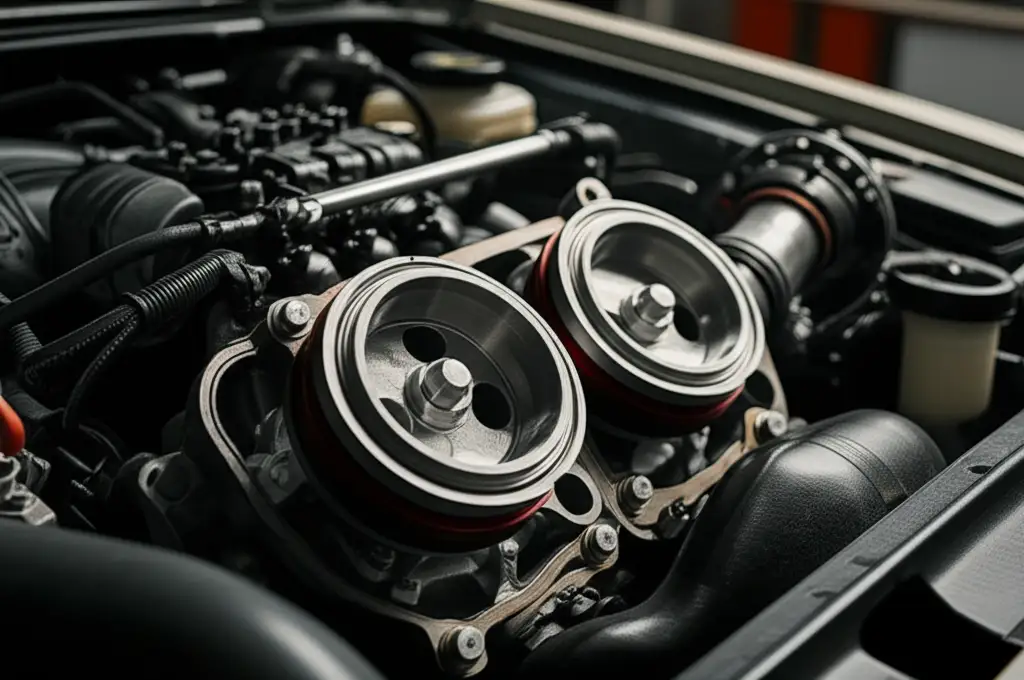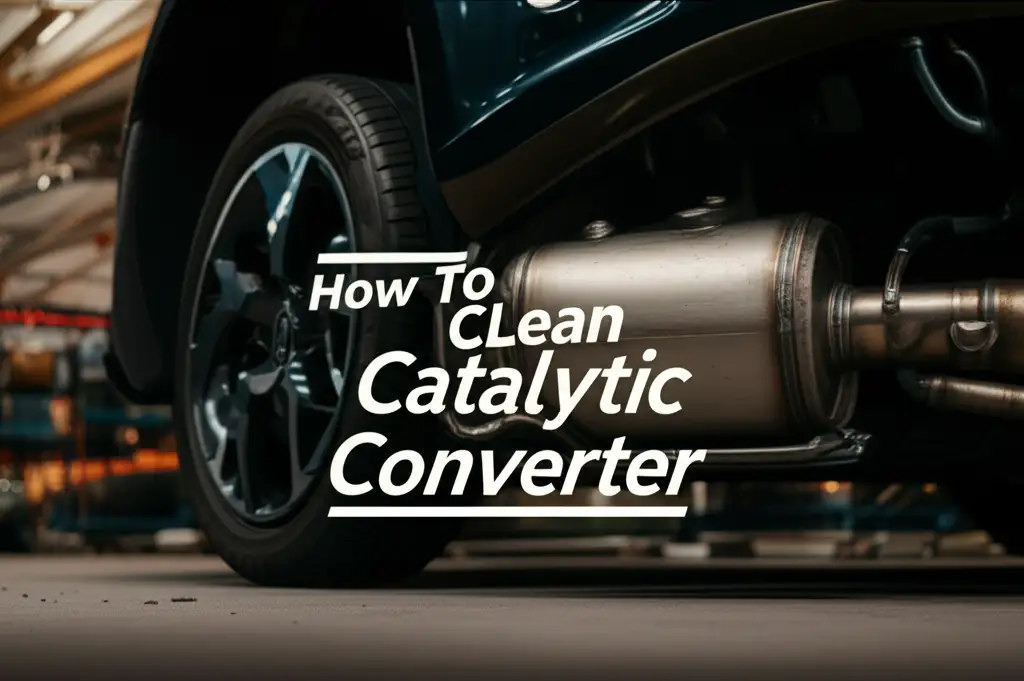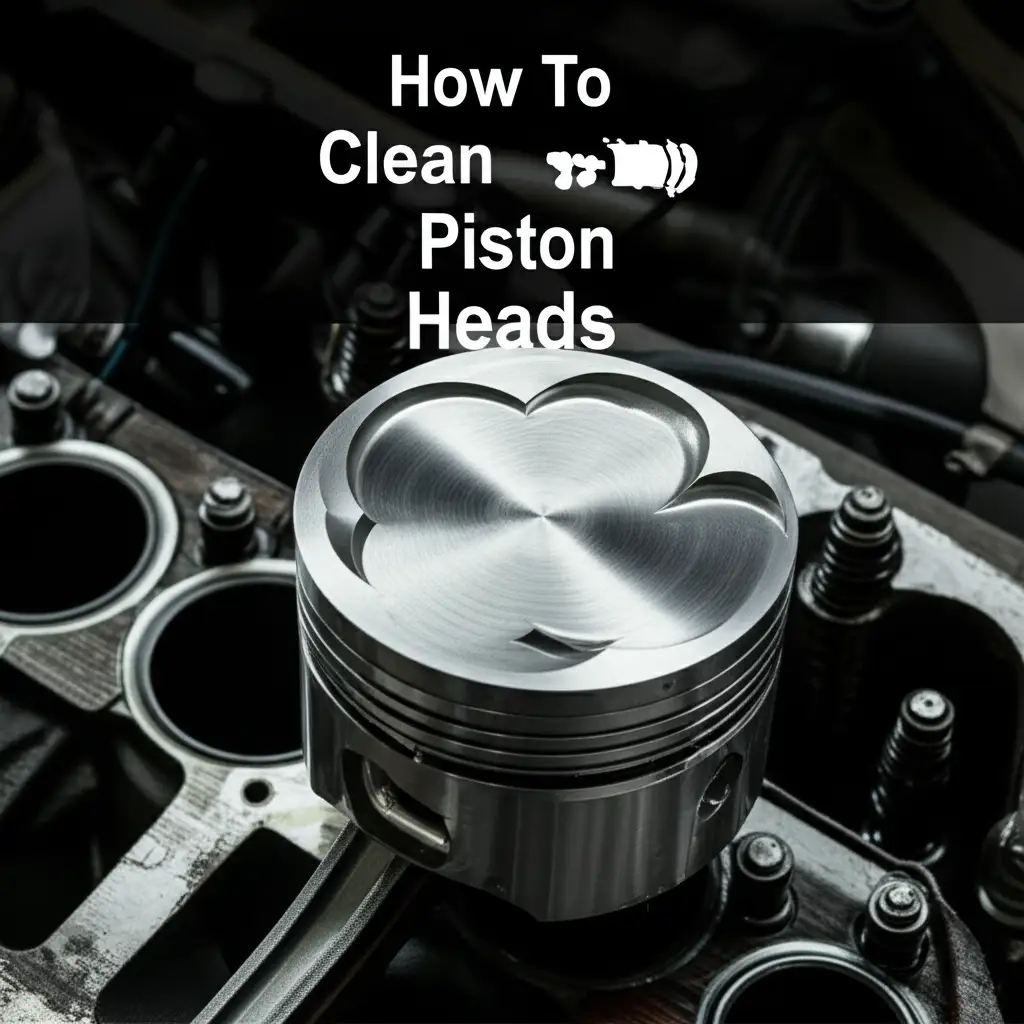· Automotive Maintenance · 13 min read
How To Clean Intake Valves

Restore Power: How To Clean Intake Valves Effectively
Is your car feeling less lively? Perhaps it hesitates or uses more fuel than usual. These are signs your engine needs attention. Specifically, your intake valves might be covered in carbon. Learning how to clean intake valves is a crucial step for many modern engines.
This guide helps you understand why these valves get dirty. We explore various cleaning methods, from simple DIY sprays to advanced professional services. You will learn the benefits of clean valves and how to keep your engine running its best. Let’s get your engine breathing freely again.
Takeaway
- Regular intake valve cleaning improves engine performance and fuel economy.
- Carbon buildup on intake valves is common, especially in direct injection engines.
- DIY chemical cleaners offer a less intrusive option for mild buildup.
- Walnut blasting provides the most thorough cleaning for severe carbon deposits.
- Preventative measures can help delay future carbon accumulation.
To clean intake valves, you can use chemical cleaners for lighter deposits or professional walnut blasting for severe carbon buildup. Walnut blasting physically removes carbon, restoring proper airflow and engine efficiency. Regular cleaning prevents performance loss and extends engine life.
Understanding Intake Valve Deposits: Why Carbon Forms
Engine intake valves play a critical role. They control the flow of air and fuel into the engine’s combustion chambers. Over time, these valves can accumulate carbon deposits. This buildup reduces airflow and affects fuel atomization. It primarily impacts engines with direct fuel injection (GDI).
In GDI engines, fuel injects directly into the cylinder. The fuel never washes over the intake valves. This means oil vapors and exhaust gases can stick to the valve stems. These vapors and gases bake onto the hot surfaces, forming hard carbon. This carbon layer grows thicker with every mile you drive.
Other engine types, like port fuel injection (PFI), face fewer issues. Their fuel sprays into the intake manifold before the valves. The fuel acts as a cleaning agent, washing away deposits. This prevents significant carbon buildup on the valves. GDI engines lack this constant cleaning action.
Factors like driving habits also influence deposit formation. Short trips and stop-and-go city driving worsen the problem. The engine does not reach high enough temperatures to burn off deposits. Using low-quality fuel or incorrect engine oil can also contribute. Understanding these causes helps you address the issue effectively.
Recognizing the Symptoms: When Your Intake Valves Need Attention
Your engine will tell you when its intake valves need cleaning. You might notice specific changes in how your vehicle performs. Pay attention to these signs. Early detection can prevent more severe engine problems. Ignoring dirty valves can lead to costly repairs.
One common symptom is a decrease in engine power. The car feels sluggish, especially during acceleration. It struggles to climb hills or merge onto highways. This happens because carbon deposits block proper airflow. The engine cannot get enough air for optimal combustion.
You may also experience poor fuel economy. Your car uses more gas to travel the same distance. Dirty valves disrupt the air-fuel mixture, making the engine less efficient. You spend more money at the gas pump than before. Keeping your intake manifold clean also helps with fuel efficiency. Learn more about how to clean intake manifold without removing it.
Rough idling is another clear sign. The engine shakes or vibrates more than usual when stopped. It might feel like it is about to stall. The carbon buildup interferes with the valve’s ability to seal properly. This causes misfires and an uneven idle. You might even see the “check engine” light come on due to these misfires.
Increased emissions can also indicate a problem. Your car might fail an emissions test. The incomplete combustion from dirty valves produces more harmful pollutants. If you notice any of these symptoms, consider checking your intake valves. Addressing them promptly saves you trouble later.
Evaluating Your Options: DIY Chemical Cleaners vs. Professional Methods
You have two main paths to clean intake valves: doing it yourself with chemicals or hiring a professional. Each method has its benefits and drawbacks. Your choice depends on the severity of the carbon buildup and your comfort level with engine work. Many car owners start with DIY options.
Chemical cleaners offer a convenient, less invasive approach. These products come in aerosol cans or pourable forms. You typically spray them into the intake system while the engine runs. The chemicals dissolve and break down carbon deposits. This method works best for light to moderate buildup. It is a good first step if you suspect minor issues.
However, chemical cleaners do not always remove stubborn, baked-on carbon. They can also dislodge large pieces of carbon that might damage other engine components. This risk is small but present. Always follow the product instructions carefully. Chemical cleaning is generally more affordable and quicker.
Professional methods, like walnut blasting, provide a deep clean. This process physically blasts away carbon using finely crushed walnut shells. Walnut shells are abrasive enough to remove carbon but soft enough not to harm engine parts. This method is highly effective for severe carbon buildup. It restores valves to a like-new condition.
Professional cleaning requires specialized equipment and expertise. It often involves removing the intake manifold to access the valves. This makes it more expensive and time-consuming than DIY methods. However, it guarantees a thorough cleaning. If you have an aluminum intake manifold, it is important to know how to clean aluminum intake manifold properly to avoid damage during any cleaning process. Consider your car’s symptoms and your budget when making your decision.
The Deep Clean: Professional Walnut Blasting Explained
Walnut blasting is a highly effective way to clean intake valves, especially for direct injection engines. This method provides a deep, thorough cleaning that chemical solutions cannot match. It is often the preferred choice for significant carbon buildup. This process requires special tools and should usually be done by trained mechanics.
The process begins by removing the intake manifold. This gives direct access to the intake ports and valves. Mechanics then rotate the engine by hand. They close the intake valves for one cylinder at a time. This protects the cylinder from debris. They ensure the valves are fully seated to prevent walnut shells from entering the combustion chamber.
Next, a special blasting tool injects finely crushed walnut shells into the intake port. The walnut shells hit the carbon deposits at high speed. This physically blasts the carbon off the valve stems and port walls. Walnut shells are abrasive enough to remove tough carbon. They are also soft enough not to scratch or damage the metal surfaces. This makes them ideal for engine cleaning.
After blasting, a vacuum attachment immediately sucks up the shells and loosened carbon. This keeps the engine clean. The mechanic repeats this process for each cylinder. Each set of intake valves gets a dedicated cleaning. When all valves are clean, they reassemble the intake manifold.
Walnut blasting restores airflow and valve sealing. Your engine breathes better, runs smoother, and regains lost power. While it is a more involved and costly procedure, the results are significant. Many owners report a noticeable improvement in engine performance and fuel economy after walnut blasting. For comprehensive engine care, it is also good to understand how to clean cylinder head without removing valves for overall maintenance.
Trying a Simpler Approach: Using Intake Valve Cleaners
For less severe carbon buildup, intake valve cleaners offer a simpler, less intrusive solution. These products are designed to be used without dismantling the engine. They aim to dissolve and break down deposits over time. This approach is accessible to most car owners. It can be a good maintenance step between professional cleanings.
These cleaners come in various forms. Some are aerosol sprays you apply directly into the intake system. Others are pourable additives you add to your fuel tank. Each type works differently but shares the same goal: to clean intake valves. It is important to follow the specific instructions on the product.
Aerosol sprays often require accessing a vacuum line or throttle body. You typically spray the cleaner into the running engine. The engine draws the cleaner through the intake manifold and over the valves. The chemicals work to soften and loosen the carbon. Some carbon burns off during combustion, while other bits exit through the exhaust.
Fuel additives, on the other hand, mix with your gasoline. They travel through the fuel system. While primarily designed for fuel injectors and combustion chambers, some formulations claim to help clean intake valves. Their effectiveness on GDI intake valves is limited. The fuel does not directly contact the valve surfaces in GDI engines.
Chemical cleaners are generally effective for preventative maintenance or mild deposits. They might not fully clear heavy carbon. They are a good starting point if you notice early symptoms. They are also much more affordable than professional services. Always use products specifically formulated for intake valve cleaning.
The Tools and Supplies for DIY Valve Cleaning
If you decide to clean intake valves yourself, gathering the right tools and supplies is essential. Having everything ready saves time and ensures a smoother process. This list focuses on what you need for a chemical cleaning approach. For walnut blasting, professional equipment is necessary.
First, you need the intake valve cleaner itself. Choose a product specifically designed for direct injection engines if applicable. Many brands offer effective aerosol sprays that you can apply directly into the intake system. Read reviews and product descriptions carefully to pick the best one for your car.
Next, you will need basic hand tools. A socket set and ratchet are crucial for removing engine covers or air intake components. You might need wrenches for certain clamps or bolts. A screwdriver set will also be handy for various fasteners. These tools help you access the areas where you need to spray the cleaner.
Safety gear is a must. Wear safety glasses to protect your eyes from chemicals and debris. Gloves are important to protect your skin. Engine chemicals can be harsh. Working in a well-ventilated area or outdoors is also important to avoid inhaling fumes.
You may also need a rag or shop towel to wipe away any spills. A funnel can be useful if you are using a pourable cleaner into a vacuum line. For some vehicles, you might need a special hose or adapter to connect the cleaner to the intake system. Check your car’s service manual or online forums for specific access points.
Finally, consider a borescope camera. This small camera can be inserted into the intake ports. It lets you visually inspect the valves before and after cleaning. This helps you gauge the effectiveness of your DIY efforts. Having these items ensures you are prepared to tackle intake valve cleaning safely and effectively.
Protecting Your Engine: Preventing Future Carbon Buildup
Cleaning intake valves is a great step. However, prevention is even better. You can take steps to minimize future carbon buildup. This helps your engine stay clean longer and reduces the need for frequent deep cleanings. Proactive measures save you time and money.
One key preventative measure is using high-quality fuel. While fuel does not wash GDI valves, good fuel ensures cleaner combustion. This reduces the amount of carbon particulate that can recirculate through the PCV system. Cleaner combustion means less material available to stick to your valves.
Regular oil changes with the correct type of oil are also critical. Modern engines, especially GDI ones, often specify low-ash oils. These oils produce fewer deposits when burned. Changing your oil according to the manufacturer’s schedule keeps your engine healthy. It also helps manage oil vapor that can contribute to buildup.
Consider installing an oil catch can. This device intercepts oil vapors from the PCV (Positive Crankcase Ventilation) system. Instead of these vapors going back into the intake manifold, they collect in the catch can. This significantly reduces the amount of oil residue that reaches your intake valves. It is a popular modification for GDI engines.
Finally, your driving habits play a role. Occasional “Italian tune-ups” can help. This means driving your car at highway speeds for extended periods. Higher engine temperatures can help burn off some light carbon deposits. Avoid excessive short trips where the engine never fully warms up. Combining these habits with quality products helps protect your intake valves.
FAQ Section
How often should I clean my intake valves?
The frequency depends on your engine type, driving habits, and vehicle mileage. For GDI engines, cleaning may be needed every 30,000 to 60,000 miles. If you notice symptoms like rough idle or reduced power, check them sooner. Regular preventative measures can extend these intervals.
Can dirty intake valves cause the engine light to come on?
Yes, dirty intake valves can trigger your check engine light. Severe carbon buildup leads to misfires as the valves do not seal properly. The engine computer detects these misfires. It then illuminates the check engine light to alert you to a problem.
Is chemical cleaning as effective as walnut blasting?
No, chemical cleaning is generally not as effective as walnut blasting for heavy carbon buildup. Chemical cleaners can help with light to moderate deposits and for maintenance. Walnut blasting provides a more thorough, physical removal of hardened carbon. It is the preferred method for significant valve cleaning.
What are the risks of not cleaning intake valves?
Ignoring dirty intake valves can lead to serious engine problems. Risks include reduced engine power, poor fuel economy, rough idling, and engine misfires. Over time, severe buildup can cause valve damage or even necessitate costly engine repairs. It also increases harmful exhaust emissions.
Can I clean intake valves without removing them?
Yes, you can use chemical intake valve cleaners without removing the valves. These cleaners are sprayed into the intake system while the engine runs. This method is less invasive and can help with light carbon deposits. However, it may not remove heavy, baked-on carbon.
What causes carbon buildup on intake valves?
Carbon buildup on intake valves primarily affects direct injection (GDI) engines. Since fuel injects directly into the cylinders, it does not wash over the valves. Oil vapors from the PCV system and exhaust gas recirculation (EGR) flow over the hot valves. These vapors bake onto the valve surfaces, forming hard carbon deposits.
Conclusion
Cleaning your intake valves is a vital step in maintaining modern engine health. We have explored why carbon builds up and how to recognize the warning signs. You now understand the differences between simple chemical treatments and thorough professional walnut blasting. Each method helps restore your engine’s performance.
Whether you choose a DIY approach or professional service, addressing dirty intake valves improves fuel efficiency, restores power, and extends engine life. By applying preventative measures, you can keep your valves cleaner for longer. Do not let carbon slow you down. Take action to clean intake valves and enjoy a smoother, more responsive ride. Your engine will thank you.
- engine maintenance
- carbon cleaning
- direct injection
- engine performance




